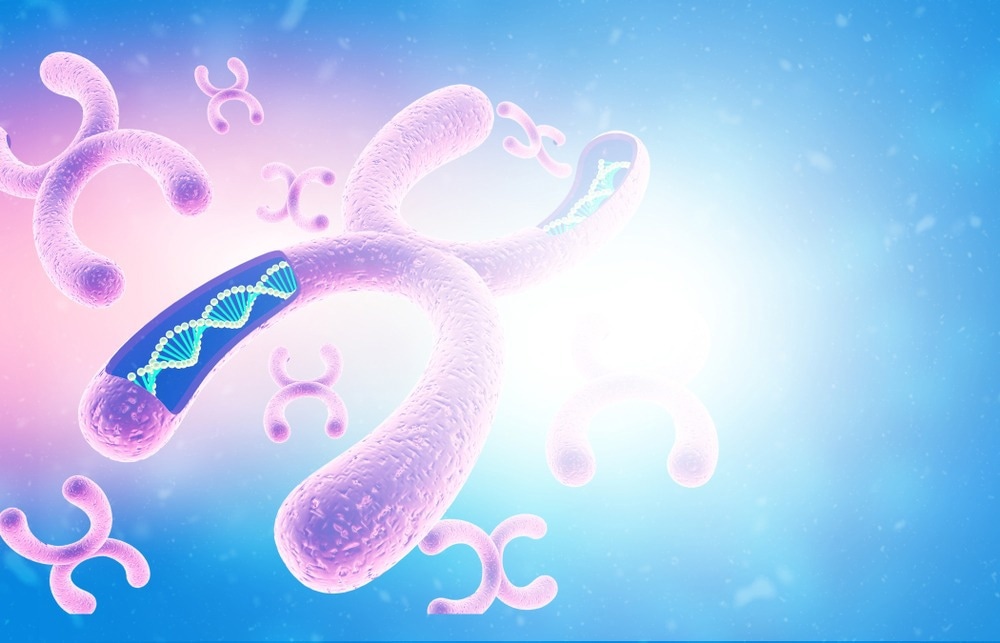IRB Barcelona researchers find 13 unique genomic patterns in unexpected patterns in mutation risks across individuals.

Image Credit: Explode/Shutterstock.com
The study sheds light on the dynamic relationship between cell proliferation, mutations, and epigenetic alterations and identifies the genes most affected by changes in mutation risk, providing crucial insights into the evolution of cancer.
The work has been published in the journal Nature Cancer.
Every cell in the human body is constantly undergoing mutations, which are a major cause of cancer, aging, and neurodegeneration. The precise distribution and patterns of these alterations across human chromosomes have not yet been determined, despite the fact that exposure to mutagenic chemicals and errors in cellular processes during DNA replication are factors in the development of these mutations.
Dr. Fran Supek, ICREA Researcher and Head of the Genome Data Science Lab at IRB Barcelona, and Marina Salvadores, a Ph.D. student in the same laboratory, have delved into the landscape of DNA mutations, unveiling unexpected patterns that differentiate individuals in terms of mutation risk.
A “genomic spellchecker,” a DNA repair mechanism aimed at lowering the risk of mutation in important regions of human chromosomes, was discovered by the lab through earlier work. Building on these discoveries, the current study sought to ascertain whether individual differences exist in mutation risk and, if so, what mechanisms underlie these variations.
This research not only expands our understanding of the factors influencing mutation rate distribution but it also has significant implications for cancer evolution, therapeutic strategies, and advancements in regenerative medicine.”
Dr. Fran Supek, Researcher and Head, Genome Data Science, Institute for Research in Biomedicine
A Genomic “Big Data” Analysis
The researchers performed a thorough analysis of the genome sequences from over 4,000 tumors from different organs to answer these questions. Individual differences in susceptibility to mutations was the specific focus of this study, in contrast to previous research that concentrated on tissue-specific mutation risks.
The group utilized machine learning algorithms and a genomic “big data” strategy to find recurring patterns in different chromosome segments. Ten of the thirteen unique patterns they found corresponded to distinct tissue types. Surprisingly, the remaining three patterns were found in nearly every tissue, demonstrating that individual differences exist in the density of mutations in particular genes.
Connecting the Dots
The researchers looked at extra data, such as gene expression and genetic abnormalities in cancer cells, to help them understand these unexpected patterns. A surprising relationship between altered mutation risks and increased cell proliferation was found by the analysis.
Alterations in the expression of two essential tumor-suppressor genes, RB1 and TP53, which are known to control the cell division cycle, have been found to be major modulators of the likelihood of chromosomal mutations.
These chromosome segments not only presented altered mutation risks but also large-scale “remodeling” of usually inactive chromosomal regions.
This remodeling, which is correlated with increased cell proliferation, mirrored the changes in mutation risks, providing unique insight into the interplay between mutations and epigenetic alterations.”
Marina Salvadores, First Author and Ph.D. Student, Genome Data Science, Institute for Research in Biomedicine
Decoding Cancer Evolution
This study has ramifications that go beyond basic research. Through the identification of the cancer-causing genes most impacted by variations in mutation risk among individuals, the researchers have produced a blueprint for predicting the course of cancer development. This information is particularly important for predicting how a cancer treatment will work as it can be used to predict the arising of tumors when drug-resistant mutations in tumors.
The research also sheds important light on the epigenetics of human cells by showing that altered or increased cell proliferation causes significant alterations in the epigenome. This knowledge may have consequences for regenerative medicine and cell reprogramming, providing new directions for investigation and treatment approaches in the future.
Source:
Journal reference:
Salvadores, M. & Supek, F. (2024). Cell cycle gene alterations associate with a redistribution of mutation risk across chromosomal domains in human cancers. Nature Cancer. doi.org/10.1038/s43018-023-00707-8.